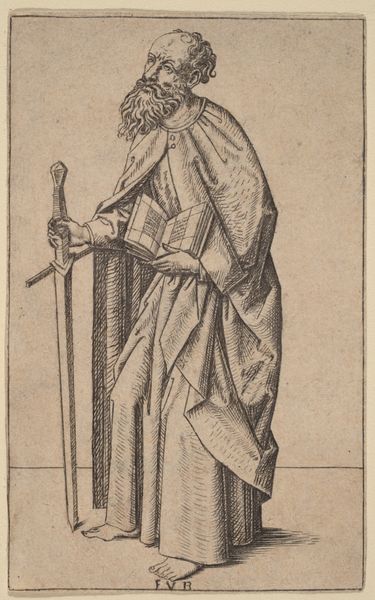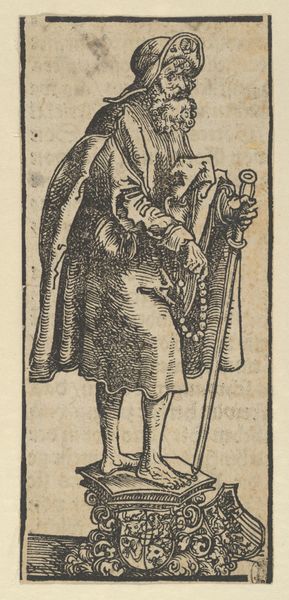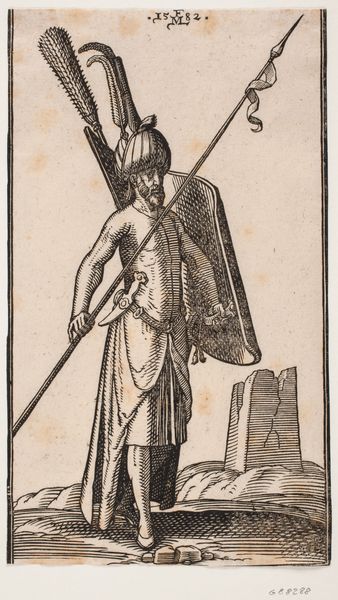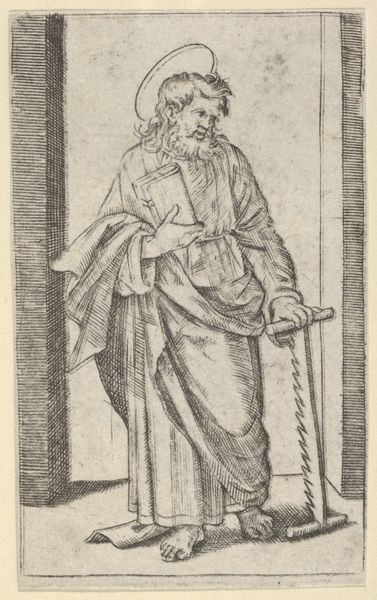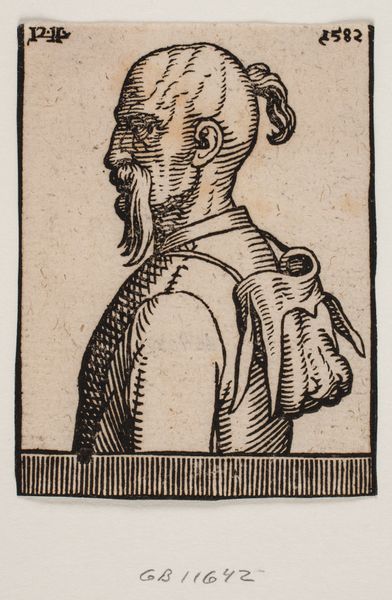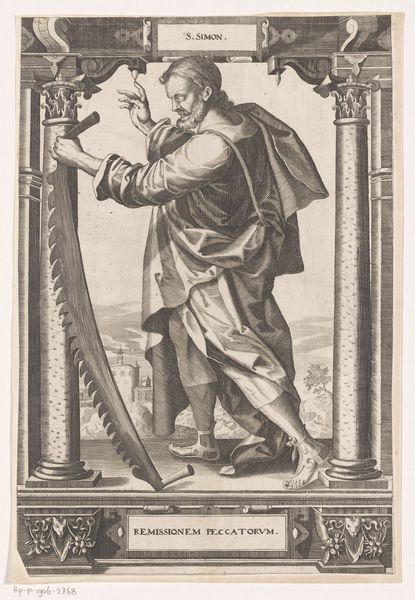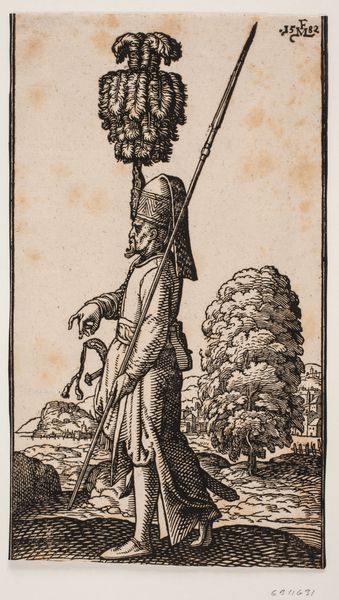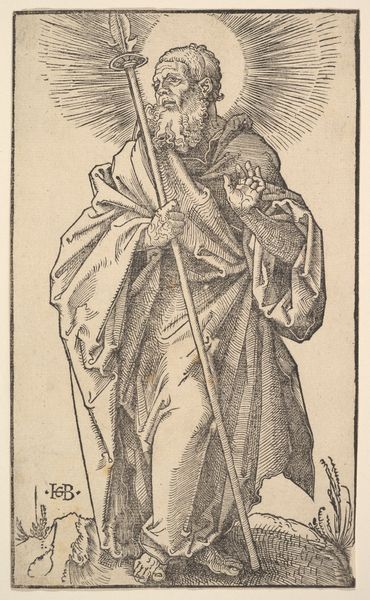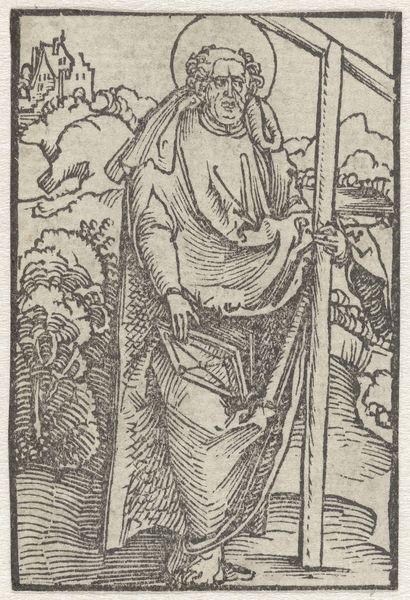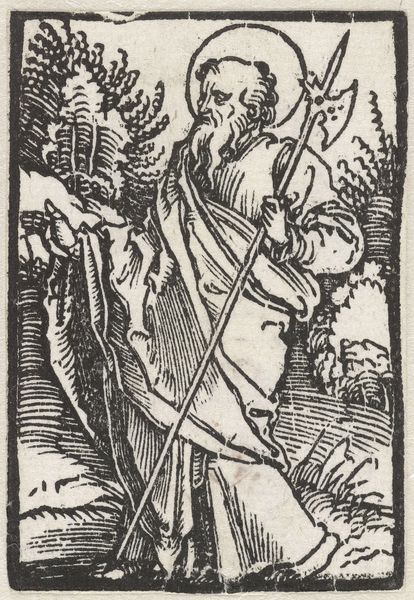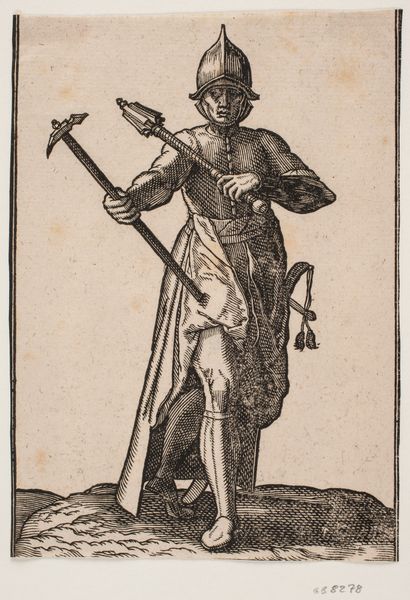
Bust of a young man with pointed hat made of leather, holding a staff in his left hand, extended over the parapet; shown in 3/4 profile from the man's left side, with the head turned slightly away from the viewer 1582
0:00
0:00
print, woodcut
#
portrait
# print
#
mannerism
#
woodcut
Dimensions: 113 mm (height) x 72 mm (width) (bladmaal)
Editor: This is Melchior Lorck’s "Bust of a young man with pointed hat made of leather, holding a staff..." a woodcut print from 1582. It's quite striking, almost severe in its use of light and shadow. What narratives do you think Lorck is trying to convey with this portrait? Curator: The enduring power of symbols interests me, especially here. Note the staff, a potent symbol of authority and pilgrimage across centuries. What emotional register does the sitter's attire evoke? Editor: It feels very "Old World" or perhaps even "Eastern" given the hat – is that intentional, do you think, to conjure a particular place or role? Curator: Indeed. This imagery speaks volumes about cultural memory, tapping into a visual language readily understood in Lorck’s time, and perhaps less so in ours. How might the extended parapet interact with notions of power? Editor: It feels like a stage, elevating him, setting him apart from the viewer and adding to that sense of authority you mentioned. Almost as if we're glimpsing a ruler on high? Curator: Precisely. We are confronted with layered meanings, continuously echoing and informing each other. Lorck encourages us to remember and continuously re-evaluate the world as it once was. Editor: So it’s less about the individual and more about what the symbols surrounding him communicate. I am coming to see this work quite differently. Curator: Absolutely. Art acts as a carrier for inherited signs, sparking reflection, inviting a dialogue with the past as it influences how we construct our present.
Comments
No comments
Be the first to comment and join the conversation on the ultimate creative platform.
